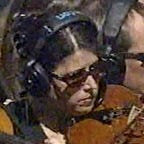T(t)rauma Llama
Blogpost #3
by Adrienne Kandhari, Anders Dallum, Jodi Bagge, Jon Dankworth, Felicia Tran, Keone Villaplaza, & Mercedes Robinson
Embodied Voices:
Reflections on Listening and Speaking in a Traumatized World
Over the past several weeks, our group has wrestled with the violent silencing of voices and embodied experiences of people living in the margins of U.S society. In particular, we’ve considered how black- and brown-bodied individuals and their communities have been systematically oppressed through the silencing of their stories by people in power who are unwilling to listen or hear. This continued silencing and shaming of one’s embodied identity has perpetuated external and internal violence toward body, mind, and spirit, and has resulted in collective, racialized trauma for American bodies, both colored- and white-bodies alike.¹
Modern American society has “failed to develop real stories” that include diversity of voices and experiences, and thus has lost capacity to bear witness to or to hear one another.² In light of this great loss, how can we as a country, composed of diverse communities and voices, invite crucial conversations and speak directly of what seems to continually be avoided or silenced? How do we bear witness to the telling and hearing of stories? How do we position ourselves to receive and give vulnerably? These curiosities have led us to consider practical ways of living in harmony within diverse communities. And though there is not one simple answer to these questions, we recognize that there must be a conversation, and that we all must show up to listen and speak.
It is important to note that the following suggestions of deeper-listening are based on our group’s embodied, Western cultural experiences of living in the United States, and that we approach this conversation mindful of our privileged position as academic learners. This is not meant to be an exhaustive list of easy solutions. Rather, we recognize that these are complex issues, rooted deeply in our country’s foundational myth of progress.³ We encourage readers to wrestle with these suggestions, and we hope that they spark conversations and imagination for shalom within diverse communities.
- Pay attention to your embodied experience: We listen with our whole body, not just our ears. When you are listening to someone speak of their experience, pay attention to what is happening in your body. Notice without judgement what emotions, sensations, and impulses come up for you and stay curious about those feelings.⁴
- Pay attention to what stories you listen to the most: Take note of who you listen to. Are they of a particular political affiliation, race, ethnicity, gender, sexual orientation, or socioeconomic status? When we take time to reflect on who we are drawn to, or away from, we can become aware of where our biases and prejudices reside.
- Ethical hearing: How you listen determines what you hear.6 With deep humility, be receptive and willing to be affected by the person speaking, especially when their cultural experience is different than your own. This awareness towards discomfort of difference and shame is particularly crucial for white-bodied folks, as a white-bodied listener may begin to recognize where they are culpable in the oppressive system being spoken about.⁶
- Know your story: Be curious about your family or community’s history and begin asking hard questions. Untold stories are often kept secret because of shame. Knowing where shame resides in your history can provide insight to where it lurks presently.⁷ Keep in mind that conversations around shame can be extremely dysregulating and impact the way we cognitively process and engage what we are hearing or experiencing.
Ultimately, this is a learning process and a complex conversation that must be ongoing; it will never be fully complete. It requires all bodies and voices to show up and to vulnerably engage one another. Communities can only be harmonious when difference is allowed,⁸ and when all persons are willing to bear witness to one another’s stories.⁹ In diving deeper into these questions concerning how we listen, we recognize that our views of God greatly impact our views of self and others, and ultimately impact how we hear who we listen to.
Endnotes:
- Resmaa Menakem, My Grandmother’s Hands: Racialized Trauma and the Pathway to Mending our Hearts and Bodies (Las Vegas: Century Recovery Press, 2017).
- Randy Woodley, Shalom and the Community of Creation: An Indigenous Vision (Grand Rapids: Wm. B. Eerdmans Publishing Co., 2012), 137.
- Ibid., 137.
- Menakem, My Grandmother’s Hands, xiii.
- Donna Orange, “Learning to Hear: Psychoanalysis, History and Ethics,” Alliance (workshop, Seattle Pacific University, Seattle, WA, February 29, 2020).
- Ibid., Alliance.
- Menakem, My Grandmother’s Hands.
- Woodley, Shalom and the Community of Creation, 137.
- 10 Shelly Rambo, Spirit and Trauma: A Theology of Remaining (Louisville: Westminster John Knox Press, 2010).
Bibliography
Menakem, Resmaa. My Grandmother’s Hands: Racialized Trauma and the Pathway to Mending our Hearts and Bodies. Las Vegas: Century Recover Press, 2017.
Orange, Donna. “Learning to Hear: Psychoanalysis, History and Ethics.” Alliance. Workshop at Seattle Pacific University, Seattle, WA, February, 29, 2020.
Rambo, Shelly. Spirit and Trauma: A Theology of Remaining. Louisville: Westminster John Knox Press, 2010.
Woodley, Randy S. Shalom and the Community of Creation: An Indigenous Vision. Grand Rapids: Wm. B. Eerdmans Publishing Co., 2012.
